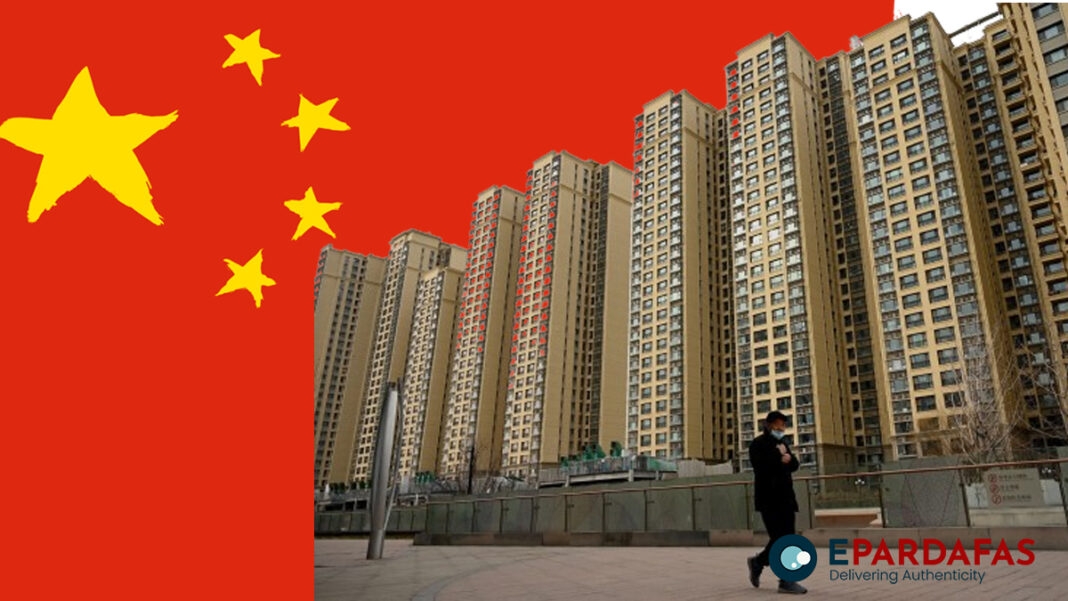China’s property sector has fallen into an unprecedented crisis. The country’s biggest homebuilders are in ruins. Two of the country’s largest developers — China Evergrande Group and Country Garden Holdings — have defaulted on their loans. The companies have a combined total of $500 billion in debts. In fact, since mid-2021, firms accounting for 40% of Chinese home sales have defaulted. Most are private property developers. Nearly 20 million houses across China have been sold but not yet completed. In October of 2023, home prices fell the most since 2014.
China’s property market makes up a substantial chunk of the country’s economy. According to an estimate, real estate and related sectors accounted for 25% of China’s gross domestic product (GDP) in recent years. Now this number is down to 22%. Consequently, despite the Chinese Communist Party’s (CCP) best efforts to quell unrest, as many as 1,777 demonstrations in the country held between June 2022 and October 2023 were related to the property sector. Homebuyers have been raising issues such as project delays, contract violations, alleged fraud and shoddy workmanship. Construction workers and other contractors are disgruntled regarding unpaid wages.
As is expected of President Xi Jinping’s regime, all efforts were made to control these protests through surveillance, intimidation, violence, detention, and censorship. Repressive tactics were involved in at least a quarter of the housing protests.
Faulty policies to blame
China’s massive property sector relied on a borrow-to-build model for decades. And now, that model has crumbled due to short-sighted government policies. In the late 20th century, most Chinese lived in houses provided by their CCP work units. The housing sector boomed during economic liberalisation in the 1980s and 1990s. Beijing encouraged this trend by streamlining regulations for residential real estate development and providing easy financing through state-owned banks. Local governments made even more liberal financial arrangements. Everyone bet on housing. Local governments sold land and lined their coffers. Families invested in houses. Builders, painters, landscapers, and real estate agents could find ample opportunities of employment. Soon, China caught up with its housing needs. But the development of residential units continued as property sales and transfers were generating huge revenues. Developers responded to the continued government support, pursuing more dubious projects. Residential real estate development rose to an astronomical 30% of China’s GDP.
The matters took a disastrous turn in 2020, when in the middle of the pandemic, Xi decided to rein in the property sector by launching the “three red lines” policy. Basically, real estate was draining credit from his preferred high-end technology sector. Over 100 regulations were imposed on businesses that raised money via equity funds, borrowings, and IPOs. One of these laws set an extremely strict cap on the borrowings. Due to this, many Chinese firms took a financial hit, including realty giant Evergrande.
Now, consumers are showing little interest in buying real estate, proving that they have no confidence in Beijing’s ability to cope with the crisis. Similarly, financial markets are questioning the future of China’s economic miracle.
Economists, investors, and bankers across the world are urging Beijing to stabilise its housing crisis. The International Monetary Fund’s (IMF) chief economist Pierre-Olivier Gourinchas has said that China’s real estate crisis was undermining confidence and causing financial difficulties. Both the World Bank and the IMF have cut their growth outlook for China’s economy.
Urban village fiasco
In a mad scramble for new channels of urban growth, Chinese leaders even decided to revamp the countries’ aging urban villages. But this is easier said than done. All urban land in China is state-owned. Urban villages are basically community-owned enclaves within larger cities. In reality, they are just a labyrinth of low-slung apartment buildings and local storefronts connected by alleyways and narrow roads. The run-down concrete apartment blocks are so close to each other that they are also known as the “handshake buildings”.
There are thousands of such villages across China and urban village renewal is an extremely time-consuming process. According to officials in Guangzhou, the average completion time for such a project stretches from 5.5 years to over seven years. Take the example of the Paibang village in the Shenzhen district. The village was slated for “urban renewal” seven years ago. In 2019, Evergrande took control of the project. But soon, the company collapsed.
The project was then transferred to Shenzhen Metro, a state-owned firm. Shenzhen Metro was also a top shareholder in China Vanke, a giant homebuilder, which is facing its own cash concerns. Investors have been dumping China Vanke’s bonds, suggesting the housing crisis is expanding from the private sector to companies with government backing as well. All this time, no work has been done in Paibang.
Too little, too late
To ensure that incomplete housing projects are finished on time, the Chinese government has attempted to ease mortgages for homebuyers, reduced down-payments, provided income tax rebates, made efforts to push for urban infrastructure upgrades and affordable housing, and given a special 200 billion yuan (~$28 billion) loan pledge.
But all these policies have led to very little change in the dire situation. Last month, real estate behemoth Country Garden still ended up defaulting on a US dollar bond. The company has over 400,000 apartments that it has sold but not yet finished building. In a ramping up of efforts to end the worsening crisis, banks are being pressured to fill in an estimated $446 billion shortfall in funding to deliver millions of unfinished apartments. The list of 50 developers, which would be eligible for financial support, includes Country Garden Holdings Co and Sino-Ocean Group. Meanwhile, China’s central bank, the People’s Bank of China, has lowered a key interest rate by the most since 2020.
But this shifting of the property sector’s burden on lenders comes with its own risks. Shrinking margins and souring loans have hit China’s banking industry, worth $56 trillion. At the end of the first half of 2023, net interest margins at big state-owned banks had dropped to a record 1.74%. The net interest margins need to be at least at a 1.8% threshold to maintain some profitability. Members of the standing committee of the National People’s Congress, China’s Communist Party-controlled parliament, however, maintain that increasing funding would ease “panicked expectations” of households.
Three years since the crisis began, the Chinese property sector is continuing to shrink. According to Beijing’s National Bureau of Statistics, investment in property has fallen an additional 8.8% this year through August. Local governments have lost so much revenue from property sales and transfers that cannot provide basic government services to their people. Chinese property prices have also fallen almost 8% over the last two years. Japanese financial analysis firm Nomura Holdings Inc. has lowered this year’s growth forecast for China from 5.1% previously to 4.6%. The growth forecast for next year is at 3.9%.
First, Beijing made the mistake of extending support to the property sector beyond the economy’s needs, then abruptly removed it in 2020, and then it did not respond promptly, when the crisis first unfolded. It seems clueless about how its policies have led to China’s present property crisis. And even now, the Chinese government does not seem to grasp the gravity of the situation. No wonder then, nearly 100 protest demonstrations are taking place in China every month.
english.pardafas.com

